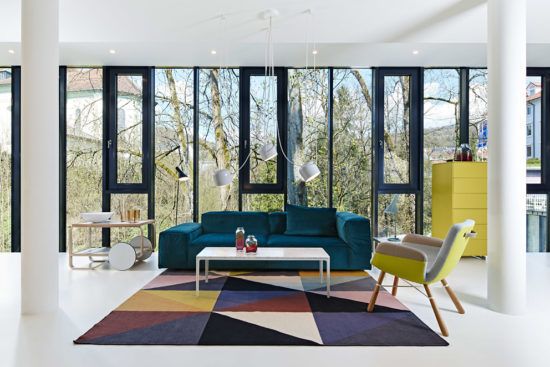
Stationary dealership death has struck prominent names in the industry recently, from such giants of retailing as Sears, JCPenny or your childhood memory Toys ‘R’ Us. These names have been innovative newcomers themselves not too long ago, when they did things such as shipping merchandise to you, no matter where you lived. Like Sears, which started as a mail ordering catalog company.
Double-digit declines are no novelty to former icons of American retailing and market participants which have not embraced the desire of consumers to shop and inform themselves at their convenience. Yet today, convenience is digital. While decay, radical cost-cutting and bankruptcies are hitting traditional retailers left and right, Amazon instead has announced that it wants to create 100,000 jobs. So, in order to avoid a Kodak moment of their own, leading niche retailers are open to look for ways to go omnichannel and are trying to learn how to succeed online.

Unexpectedly, the luxury segment is providing some interesting first examples of how petite luxury retailers are using platforms to increase sales and succeed online. Whereas one might have expected the luxury segment to be somewhat of an awkward fit as what regards online revenues, in practical terms the taboo has been broken. Take London-based farfetch.com, which has enabled the world’s finest fashion boutiques to sell online and recently reached $800m in gross sales.
According to a new report by Allied Market Research titled "North America Luxury Furniture Market", the North American luxury furniture market is expected to reach $9.2 billion by 2022, with a prominent CAGR of 3.1% from 2016 to 2022. This development is also seen globally, with designer furniture being one of the growing segments in the 1+ trillion overall global luxury market.

The furniture industry is following fashion online, and despite the brick-and-mortar carnage which is also evident amongst furniture retailers, the designer and luxury furniture segment is growing, and their best-in class are looking for similar ways to succeed not only offline, but also online. Nevertheless, luxury consumers are demanding, and brands that fail to meet these expectations will have a tough time to survive.
In their report “Digital or Die - The Choice for Luxury Brands”, the Boston Consulting Group has put out a widely cited report that illustrates how important digital channels already have become for the luxury segment and that luxury consumers - including older shoppers - want an omnichannel experience:

The $300B+ home and living market is continuing to see taboos crumbling, such as mattresses being bought online. Nevertheless, there is still a lot of reach offline and value in experiencing products before you buy them, as Philip Krim, co-founder and CEO of Casper has been found saying when they announced a partnership with Target earlier this year: “Since our launch online three years ago, we’ve seen a huge demand from customers who want to experience the Casper brand in person”.
That’s why showrooms are experiencing a true renaissance. They are embracing their core DNA and have created architecturally exciting spaces, full of rich consumer experiences and pleasure - with a sophisticated and passionate love for design. Leading interior design boutiques are realising that much of their skill set is not yet represented well online and they are developing service portfolios that extend far beyond the average including:

- Gorgeous showrooms for you to try and touch objects
- Skilled interior architects to advise and plan for you
- Highly curated inventory with finest materials and fabrics
- World class, international design
- A network of quality specialists like carpenters, tilers or painters
To bridge exactly the offline and online gap, some startups are popping up to help old school furniture chains to jump directly into the best possibilities technology has to offer. Best example is one of our investments, Berlin-based startup Innsides, which has quietly started to enable some of the finest interior design boutiques to help them succeed online. First, Innsides enabled the boutiques to generate data on what is actually available in their showroom to try and touch and display it to consumers online - an unheard of solution for luxury furniture retailers until now.
This allows consumers to locate design furniture nearby without having to call, enquire via email, or worse, go to a showroom only to learn that the desired piece is currently not around. Founded by Dutch design aficionado Anne-Marie den Hertog and Portuguese-born serial tech entrepreneur Vasco Sommer-Nunes, Innsides is already live in 10 German cities with top-notch boutiques such as minimum in Berlin, Gärtner in Hamburg or Seipp in Waldshut. Shopping the world’s finest interior design boutiques under one roof is next.
“Selectively increasing our visibility online is a logical step for us, just as well as servicing our customers digitally” says Lisa Soldo, responsible for marketing at minimum in Berlin.
Manufacturers benefit from this liberation of data as well, enabling them to point customers to the right dealer instead of putting them through the agony of hunting down where the desired object of choice actually is. Making this information public solves an obvious problem both for consumers and retailers - “but that’s obviously just the beginning”, says Vasco Sommer-Nunes. “There’s plenty of value to be generated for consumers, retailers and manufacturers by leveraging existing competences online”.
However, enabling incumbents in slow-moving markets such as furniture takes dexterity and persistence. Many startups attempting to do so have failed, not because of their underperforming application or flaws in product design, but rather because of the market participants being too slow to actually embrace digital opportunities. Bonagora built a B2B-marketplace for decor manufacturers to sell to retailers, but despite the obvious benefits to both the supply and demand side, both customer groups simply showed adoption rates that were too slow for Bonagora to actually survive: despite almost $5m in funding, it shut down in December last year.
Given the underrepresented and inaccessible service portfolio interior design boutiques offer online, how we upgrade our homes in the future may very well change once these services become more networked and easier to access. We’re betting on Innsides to break the glass - only time will tell if our instincts are right.
